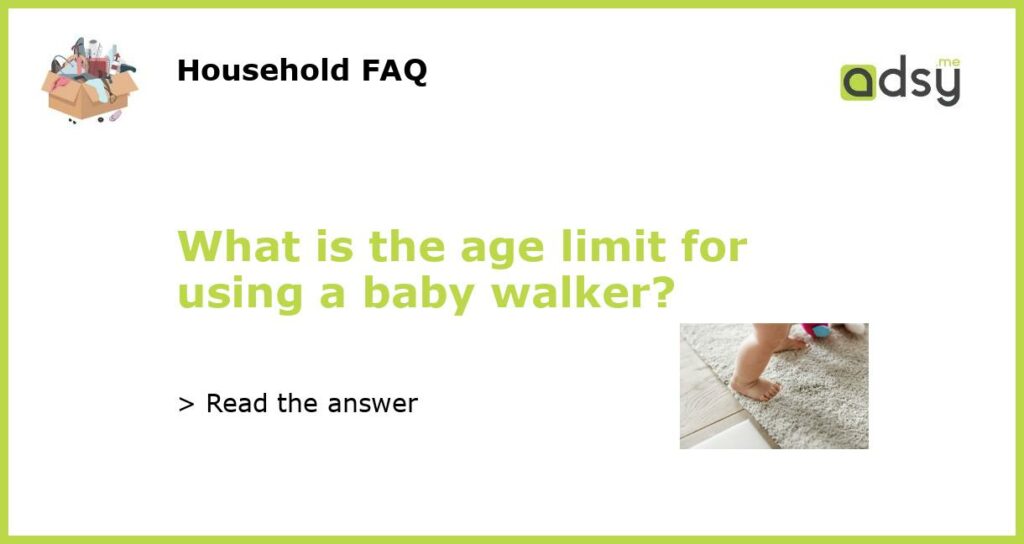When Can Babies Use a Walker?
Baby walkers are often seen as a fun and exciting way for babies to experience a new sense of independence. However, there are age limits for when it is safe for your baby to start using a walker. Pediatricians generally recommend that babies start using walkers once they can sit up on their own and are at least 6-7 months old.
The Dangers of Using a Walker Too Early
While walkers can be beneficial for babies who are just learning to walk, they can also be dangerous if used too early. Younger babies who are not yet strong enough to sit up on their own or control their movements may fall over or become stuck in the walker, causing injury or even suffocation. Additionally, using a walker too early can delay a baby’s natural development of important motor skills such as crawling or standing on their own.
When Should Babies Stop Using Walkers?
Just as there is an age limit for when babies should start using walkers, there is also a limit for when babies should stop using them. Generally, once a baby is able to walk on their own without the assistance of a walker, it is time to retire it. This is typically around 12-15 months old, although some babies may continue to use a walker up to 18 months old.
Alternative Options to Baby Walkers
If you are concerned about the safety of a baby walker or if your baby is too young to use one, there are alternative options to consider. Play pens or activity centers can provide a safe and stimulating environment for your baby to explore and play. Similarly, push toys or ride-on toys can help your baby develop important motor skills while also promoting independence and mobility.
The Bottom Line
Ultimately, the decision of when to introduce a baby walker to your child depends on their individual developmental milestones and readiness. Always consult with your pediatrician to discuss any concerns about using a baby walker and consider alternative options if necessary. Remember that keeping your baby safe and healthy should always be your top priority.






